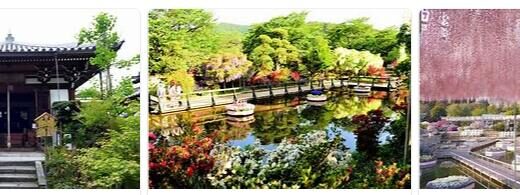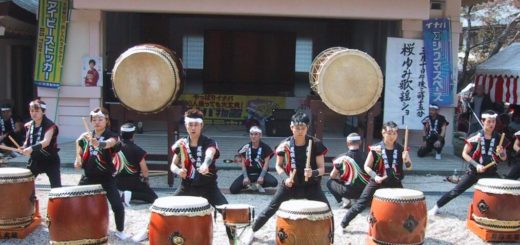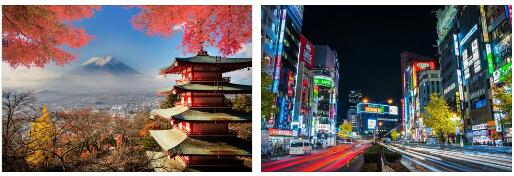Japan Brief History Part II
The second phase of feudalism
In the troubled period that followed, marked up to 1392 by the existence of two courts, that of the North and that of the South, ruled by two emperors, the figure of Ashikaga Takauji emerged who kept the title of shōgun from 1338 to 1358 to then pass it on to the his descendants. During the Ashikaga shogunate, the first trading centers arose and some port cities started relations with the Chinese empire, in competition with the smuggling of Japanese pirates (wakō). The prosperity of trade was threatened by the war of the Ōnin era (1467-77). Military governors, vassals of the shōgun, turned into local authorities, known as daimyō (feudal lord); the shōen disappeared and landed property everywhere took the form of fiefdoms. In the final years of the Ashikaga, Portuguese missionaries appeared on the coasts of Japan, including Francesco Saverio and Gaspar Videla and, in their wake, merchants who introduced firearms in Japan The three ‘unifiers’ ended the endemic interfeudal struggles: Oda Nobunaga, Toyotomi Hideyoshi and Tokugawa Ieyasu. Nobunaga eliminated Buddhist political power by destroying the temples of Mount Hiei, around Kyoto and put an end to the bakufu (government of the shōgun) of the Ashikaga (1573); he disarmed the peasants and formed large permanent armies stationed in fortified cities, favoring the abandonment of the countryside by the bushi. The work was resumed and consolidated by Hideyoshi, who imposed a decentralized government structure on the reunified country. He also pursued the goal of conquering China and organized two expeditions, which were interrupted on his death (1598).
Centralized feudalism
In 1600, power passed into the hands of Tokugawa Ieyasu. Having assumed the title of shōgun (1603) and established his capital in Edo (od. Tokyo), Ieyasu gave birth to the so – called baku-han system, in which the coexistence of a national authority (the bakufu) with authority was achieved territorial represented by the nearly 300 daimyō, owners of their han (fiefdoms). Ieyasu made the Neo-Confucian social ethics the basis of the Tokugawa power, who would rule the Empire until December 1867. The ruling class was made up of the sanke (the Tokugawa “three families”), the daimyō and the samurai. Next to them were the emperor and his court of kuge (nobles), without effective political power. The peasants were the backbone of society while the merchants, according to the Confucian tradition, were barely tolerated. Then came the hinin (the “non-men”, socially discriminated against because they were criminals or engaged in ‘impure’ jobs). From an institutional point of view, the shōgun was none other than the most powerful daimyō, whose government was based on a complex hierarchy of feudal bonds. The daimyō ruled the fiefdoms with the help of their employees, that is the samurai who, in the two and a half centuries of Tokugawa hegemony, became administrators. In their relations with the outside world from 1641, the Tokugawa implemented the policy of sakoku (“Closed country”). All foreigners were expelled, except the Dutch, confined to the artificial islet of Deshima in Nagasaki Bay., and foreign trade was limited to a few ships a year. The economy and public finances were based on land rents. Despite the contempt for merchants, the warriors – who were forbidden to trade – had to resort to their services with increasing frequency, thus favoring the enrichment of some of them. During the eighteenth century the development of trade resulted in the formation of a national market with two strong poles: Edo and the Osaka area. Between the eighteenth and nineteenth centuries, the development of the market allowed the refinement of commercial techniques and the creation of merchant guilds. During the eighteenth century conditions in the countryside also changed. In some areas of the country, the introduction of new technologies favored an increase in productivity and, over time, investments by rich peasants in activities related to agriculture. In those areas, a differentiation emerged between a few rich peasants, a mass of middle-income peasants and a few poor peasants. These elements constituted the endogenous preconditions that favored the transition of the Japan from feudalism to capitalism.
The revolution from above
According to THEDRESSWIZARD, the dissolution of the Tokugawa regime and the transition to a bourgeois socio-economic organization were also determined by external causes. From 1854, Japan was forced to open up to international trade with the imposition of a series of unequal treaties with the major Western powers. This external pressure was accompanied by the rise of a party in favor of Western relations within the Japan, which finally prevailed over the proponents of isolation. The winning coalition, made up of samurai of middle-upper rank and financed by the great merchants, in 1867 defeated the army of the shōgun, confiscated its properties, decreed the end of the Tokugawa bakufu and started a reform process in the name of Emperor Mutsuhito ( known by the name of his reign age, Meiji, 1868-1912).
The Meiji oligarchy pursued the objective of safeguarding the independence of the Japan with the transformation of the economy and the establishment of a modern army, capable of competing with the Western ones. The aim was achieved in twenty years through changes introduced from above which revolutionized the socio-economic organization and institutions of the state. In the social field, the privileges of the warrior class and the restrictions on social mobility were abolished. In economics, industrial development was stimulated with private financing and the creation of model industries; the most incisive reform concerned the countryside, where the land was distributed in ownership to those who were able to demonstrate ownership. In the education sector, the entire school system was completed over the course of two decades. These transformations aroused a series of reactions, generally of a conservative nature. The peasants gave life to uprisings, but the greatest risk was constituted by the revolt of the former samurai led by Saigō Takamori, which the new army of conscripts suppressed in 1877.



